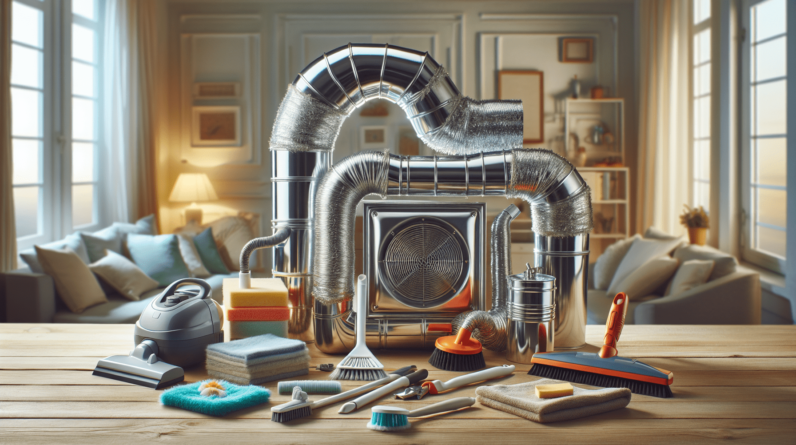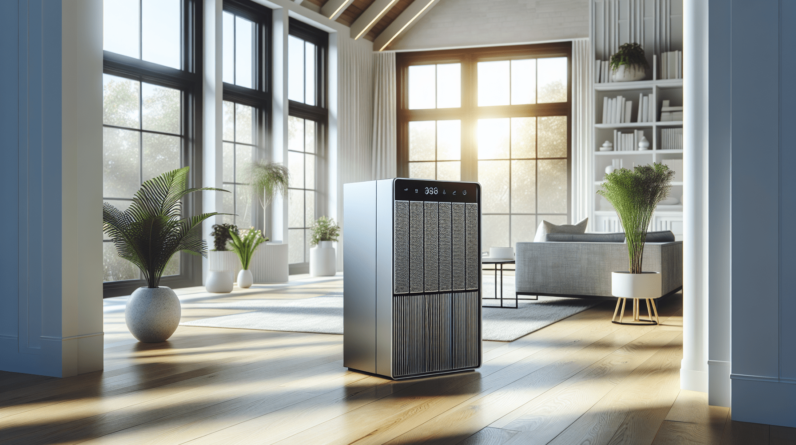

Have you ever found yourself sweltering in the heat while trying to enjoy an adventure in your motorhome? The comfort of climate control can make a world of difference during your travels, especially when those warm sunny days start to feel more like a sauna. In this article, you’ll discover everything you need to know about air conditioners for motorhomes, from types to installation tips and maintenance.
Understanding Motorhome Air Conditioners
When looking for the right air conditioner for your motorhome, it’s essential to understand the different types available and how they function. The climate in which you travel and the size of your motorhome will also affect your choice.
Types of Air Conditioners
There are primarily two types of air conditioning units for motorhomes: rooftop units and portable units. Both have their pros and cons, depending on your specific needs.
Rooftop Units
Rooftop units are mounted on the roof of your motorhome, providing centralized cooling throughout the living space. They often have a sleek design and can be more efficient for larger motorhomes.
Advantages:
- Space-Saving: Since they’re on the roof, they don’t take up any internal space.
- Capacity: Many rooftop units have high BTU ratings, meaning they can cool larger areas more effectively.
Disadvantages:
- Installation: Professional installation is often recommended, which can increase cost.
- Noise Level: Some models might be slightly noisier than portable units.
Portable Units
Portable air conditioners are standalone units that can be moved as needed. They usually come with hoses that vent out of a window or another opening.
Advantages:
- Flexibility: You can move them to the area that needs cooling the most.
- Easy Installation: Generally, you just need to vent them out a window, making for a simpler setup.
Disadvantages:
- Limited Cooling Capacity: They may not be effective in larger motorhomes.
- Space Consumption: They take up valuable floor space, which can be at a premium in a motorhome.
Choosing the Right BTU Rating
BTUs, or British Thermal Units, indicate the cooling capacity of an air conditioning unit. The higher the BTU rating, the more space the unit can effectively cool.
BTU Calculation
To calculate the right BTU for your motorhome, consider the following factors:
- Size of the Space: Measure the square footage of your motorhome. A standard formula is 20 BTUs per square foot.
- Insulation: Well-insulated motorhomes require less cooling power.
- Number of Occupants: More people increase the heat in the space, so add extra BTUs for each person.
| Square Footage | Recommended BTU |
|---|---|
| Up to 100 sq ft | 5,000 BTU |
| 100 – 200 sq ft | 7,000 BTU |
| 200 – 300 sq ft | 10,000 BTU |
| 300 – 400 sq ft | 12,000 BTU |
By understanding BTUs, you can make an informed decision on the most efficient air conditioner for your motorhome.
Installation Considerations
When it comes to installation, there are a few essential considerations to keep in mind. The process can differ significantly between rooftop and portable units.
Rooftop Unit Installation
-
Professional Installation: For rooftop installations, hiring a professional is often the safest route. They can ensure proper sealing to prevent leaks and optimize the unit’s performance.
-
Weight Distribution: Ensure your motorhome can support the weight of the unit without compromising stability.
-
Ducted vs. Non-Ducted Systems: Decide whether you want a ducted system, which distributes air throughout various vents, or a non-ducted system, which has one or two centralized vents.
Portable Unit Installation
-
Vent Placement: Make sure you have a window or door nearby to vent hot air outside. Most portable units come with a standard window kit for easy installation.
-
Electrical Requirements: Ensure your motorhome has access to electrical outlets compatible with your air handlers, particularly if you’re using a higher BTU unit that requires more power.
-
Mobility: Consider how you will transport and set up the unit each time. A lightweight model can be easier to manage.

Maintenance Tips for Your Air Conditioner
Maintaining your air conditioning unit is crucial to its longevity and efficiency. Here’s how you can keep it running smoothly throughout your travels.
Regular Cleaning
Keep the filters clean to prevent dust and dirt from blocking airflow. Most units have washable filters that should be rinsed and dried regularly.
- Frequency: Clean filters every month during heavy usage.
- Replacement: Check if your unit requires filter replacements in addition to cleaning.
Inspection of Ducts and Vents
If you have a ducted system, inspect the ducts regularly for any obstructions or damage. Blocked ducts can lead to inefficient cooling and higher energy bills.
- Visual Checks: Look for visible signs of wear or leaks.
- Professional Servicing: Sometimes a professional duct cleaning service is a worthwhile investment.
Check for Ice Build-Up
If you notice ice forming on the coils, it may indicate an airflow issue or a refrigerant leak. Turn off the unit and let it thaw before troubleshooting the problem.
Energy Efficiency Considerations
Given that you want to keep cool while being mindful of energy consumption, energy efficiency becomes vital. Many modern air conditioners offer energy-saving modes that can help reduce power usage.

SEER Rating
Look for the Seasonal Energy Efficiency Ratio (SEER) rating of the unit. The higher the SEER, the more efficient the unit will be over time.
- Recommended SEER: Aim for a SEER of at least 13 for optimum efficiency.
Smart Thermostats
Consider upgrading to a smart thermostat that can help you manage temperature settings and monitor energy usage through an app. This can help you avoid energy waste and keep unnecessary costs down.

Understanding Power Requirements
Power requirements are crucial whether you’re using a rooftop or portable air conditioning unit. First, check the wattage of your desired unit and ensure your motorhome has the necessary electrical infrastructure.
Generator Compatibility
If you plan to use a generator, ensure it’s rated high enough to support the air conditioner when it’s running. Knowing the starting and running wattage will help you select a compatible generator.
| Unit Type | Starting Watts | Running Watts |
|---|---|---|
| Rooftop AC (13,500 BTU) | 3,500 | 1,500 |
| Portable AC (10,000 BTU) | 2,500 | 1,200 |
Battery Options
If you’re boondocking or using solar power, be mindful of your battery limits. An air conditioning unit can drain your power supply quickly.
- Battery Capacity: Calculate your battery’s amp-hour rating to ensure it can handle the load.
Common Problems and Troubleshooting
Even with the best of care and maintenance, issues can arise. Here’s how to troubleshoot some common air conditioning problems.
Air Conditioner Won’t Turn On
If your air conditioner isn’t powering up, check your power source first. Ensure that your unit is getting electricity and that the circuit is functioning.
- Check Cords and Connections: Look for any fraying or damaged cords.
- Reset the Unit: Sometimes a simple reset can solve the problem.
Inadequate Cooling
If your air conditioner runs but doesn’t cool effectively, investigate further.
- Dirty Filters: A clogged filter can restrict airflow and reduce cooling efficiency.
- Refrigerant Levels: Low refrigerant levels can lead to inadequate cooling, which may require a professional.
Strange Noises
Unusual noises can indicate several issues. If you notice loud banging or hissing sounds, it may be time to call in an expert.
- Loose Components: Inspect for any parts that may have come loose during travel.
- Compressor Issues: Hissing sounds might indicate a refrigerant leak.
Conclusion
Choosing the right air conditioning system for your motorhome can significantly enhance your travel experience. By understanding the types of units available, selecting the appropriate BTU rating, and taking care of proper installation and maintenance, you’ll ensure your comfort on the road.
The key is to do your research and prepare for what best fits your use case, whether it’s a sleek rooftop model or a portable option. With the right setup and care, your motorhome air conditioner will keep you cool and comfortable, allowing you to make the most of your adventures.
As you hit the road, remember that having a reliable air conditioning system can turn potential discomfort into pure fun. Safe travels!






